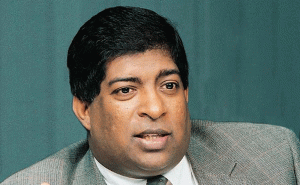Colombo, October 1 (NIA): Even as it is burdened with a total debt of US$ 69.7 billion, which is 75 percent of its GDP, Sri Lanka is getting into more debt, points out Wade Shepard in Forbes.
Under President Maithripala Sirisena and Prime Minister Ranil Wickremesinghe, who came to office at the beginning of 2015, domestic debt without starting any new large-scale infrastructure projects grew by 12 percent and foreign debt by 25 percent, he points out.
Sri Lanka is actually getting deeper into debt. As reported by East Asia Forum, Sri Lanka’s Central Bank has stated that it is their intention to secure an additional $5 billion in loans with the backing of the IMF.
The official estimate of what Sri Lanka currently owes its financiers is $64.9 billion — $8 billion of which is owned by China. The country’s debt-to-GDP currently stands around 75% and 95.4% of all government revenue is currently going towards debt repayment.
“But much of Sri Lanka’s pile of debt accrued in the process of initiating an entire buffet of large-scale and extremely expensive infrastructure projects under the direction of former president Mahinda Rajapaksa. Between 2009 and 2014, Sri Lanka’s total government debt tripled and external debt doubled, as the country engaged in a number of costly undertakings — such as attempting to build a new, multi-billion dollar city in the middle of a jungle (which includes the world’s emptiest airport) , constructing one of the most expensive highways ever made, as well as other pricey endeavors, such as spending $42 million just to remove a rock from Colombo Harbor,” Shepard says.
Trying to develop its infrastructure to increase its economic potential has plunged Sri Lanka deep into a pit of debt, pushing the country to the brink of bankruptcy, and prompting an IMF bailout, he notes.
Sri Lanka may be in a debt trap that it can’t get out of, Shepard predicts gloomily.
“This year alone $4.5 billion is due to foreign lenders and next year $4 billion is owed — bills which the country has not yet figured out a way to pay.’

This debt situation is clearly not sustainable, but there’s more he says.
“In addition to racking up large amounts of government debt via the usual channels, it’s now becoming evident that the previous government also utilized state-owned enterprises to the previous government to take out loans on its behalf. While the full extent of this extracurricular lending seems unknown, current estimates peg it at a minimum of $9.5 billion — which is all off the books of the finance ministry.”
“We still don’t know the exact total debt number,” Sri Lanka’s prime minister admitted to parliament recently.
Wickremesinghe said that the global economic downturn was also making it more difficult for Sri Lanka to boost state finances.
IMF Sympathetic But Also Cautious
The IMF, which approved a $1.5 billion, three-year loan in May, said a durable reduction of the fiscal deficit and public debt through a growth-friendly emphasis on revenue generation should be a priority for the nation’s fiscal policy.
But it has had to withhold a second tranche because the government is still to make up its kind on the politically controversial issue of VAT, the IMF’ inspection team told the media here in Colombo last. month.
The IMF wants the government is widen the direct tax base which is now minuscule. It also revenue collection to improve vastly and is willing to provide technical assistance. The government is seen to be wanting in these matters. It is even extending tax concessions to various sections of society to safeguard and extend its electoral base.
Government Hamstrung By Political Compulsions
Prime Minister Wickremesinghe said the government has to increase revenue, streamline taxes and create jobs through foreign investment.
But foreign investment is not coming in because of a lack of consistency in government policies and unfavorable labor laws.
The Indians, who have traditionally shown a keen interest in investing in Sri Lanka, have reasons to be wary now after their 500 mw coal fired power project was objected to after all the ground work had been done. Sri Lanka now wants India to replace the plan by one to build an LNG-fired plant. India has said it will oblige but the switch to LNG will take time. In the meanwhile, engineers of the Electricity Board have warned that if power projects are not speeded up, Sri Lanka will have to go for load shedding and power cuts in 2018.

India wants to bring in investments to Sri Lanka through an Economic and Technical Cooperation Agreement (ECTA) and the Wickremesinghe regime is all for it, but there is popular resistance to any pact with India, be it economic or political, out of the fear that Big Brother will dominate.
Various interim solutions to the debt crisis have been proposed, such as offering debt for equity swaps to China. But China has shown no interest in this. Beijing wants to partner the private sector and not the public sector, the latter being preferred by the Sri Lankan government.
Sri Lanka plans to privatize several loss making State Owned Enterprises (SOEs) but it also knows that it is politically risky.

























































